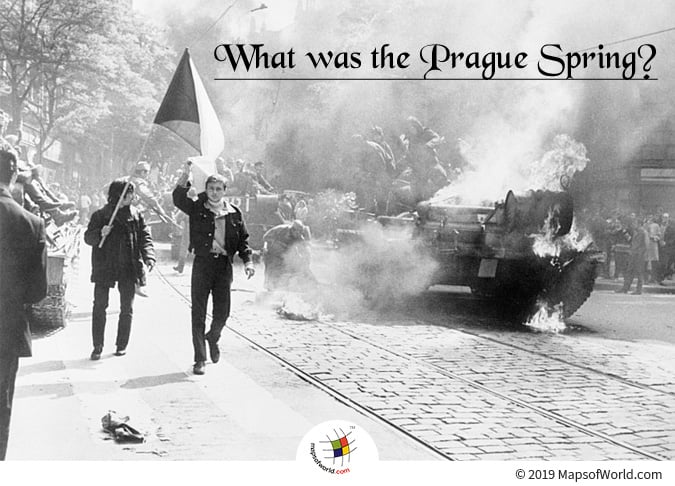

Prague Spring - A Short Period of Some Major Political Reforms.
In the year 1968, Czechoslovakia attempted to free itself from the influence and control of the Soviet Union (USSR) after a period of growing unrest across the country. It was a short period of some major political reforms, economic liberalization, and exercising the right to freedom of speech. It is now known as the Prague Spring. However, it didn’t last.
Since the end of World War II, Czechoslovakia was under the domination of the Soviet Union through the Warsaw Pact. It had become a communist country that was part of the East European satellite states of the Soviet Union. However, in the year 1968, an attempt was made by the Czech people to gain back control over their lives. To create ‘socialism with a human face’, they tried to reform the political and economic system. This effectively translated into retaining the previous socialist model of government, but with less restrictions on speech and travel and more freedom for the Czechs, along with better delivery of goods and services. This arrangement lasted for only a few months, before the Warsaw Pact troops invaded the country and crushed its new system.
There were two major factors that were instrumental in causing the Prague Spring. First, their leader till 1968 was Antonin Novotny, who was an unpopular hard-line communist leader. His rule was marked by lack of personal freedom for citizens and censorship of the press, fomenting unrest. Second, Czechs were very bitter about the fact that USSR exercised control over their economy, and was using it for its own advantage, driving their country weaker.
In the countryside too, Czech farmers were disappointed, as all their efforts at modernizing the farming practices were shot down and they had to strictly adhere to the Communist Party guidance.
The peaceful demonstrations against the rule of Novotny began in the year 1967, mostly by the Czech students. Moreover, some prominent writers and intellectuals started demanding freedom of expression in publishing and media. To curb the protests, Novotny asked Brezhnev, the Soviet leader, for help. However, the latter declined. Eventually, Novotny was replaced by Alexander Dubcek as the First Secretary of the Communist Party on January 5, 1968.
In April of the same year, Dubcek declared an Action Plan to bring into effect ‘socialism with a human face’. This, in essence, was meant to introduce freedom of speech and removal of Soviet domination over the economy.
This started to worry the Soviets. Despite the fact that Dubcek was a communist, he began liberal reforms and allowed political parties, which were non-communist, to set up and put forward their respective candidates for elections. And though Dubcek gave the assurance that Czechoslovakia would continue to stay in the Warsaw Pact, the fact that he welcomed President of Yugoslavia Marshal Tito to Prague made Moscow cautious.
Wary of the fact that Czechoslovakia was liberating from the Soviet control, Brezhnev announced that no country under the USSR control in Eastern Europe was allowed to reject communism. He made clear that all attempts to resist the decision would be suppressed at all costs, ‘even if it meant a third World War’. It came to be called the Brezhnev Doctrine.
To put weight to his declaration, he sent more than 500,000 troops from the Warsaw Pact countries into Czechoslovakia on August 20, 1968. However, the Czechs did not fight back, for they were not equipped to deal with such a large number of soldiers armed with sophisticated weapons. They, in turn, resorted to peaceful protest tactics, like offering soldiers flowers standing in front of their tanks.
The years following the Prague Spring were marked by improving economic status but deteriorating political freedom in Czechoslovakia. Dubcek was arrested and was replaced by Gustav Husak as the Czech leader. All the reforms initiated by Dubcek were reversed by the latter. After that, Czechoslovakia continued to be a communist country of the Eastern Bloc till 1990.
Related Links:
The Republic of Madagascar is an island country located in the Indian Ocean, off the…
The Euro is the official currency of the European Union. It is, however, not incumbent…
There are many countries or regions that are partially recognized by the UN, have disputes…
The Alaska Statehood Act was signed into law by President Dwight D. Eisenhower in 1958,…
The name Persia may, however, only be used to refer to Iran in some contexts.…
Hawaii is an Island State in the US. It is one of the 50 states…